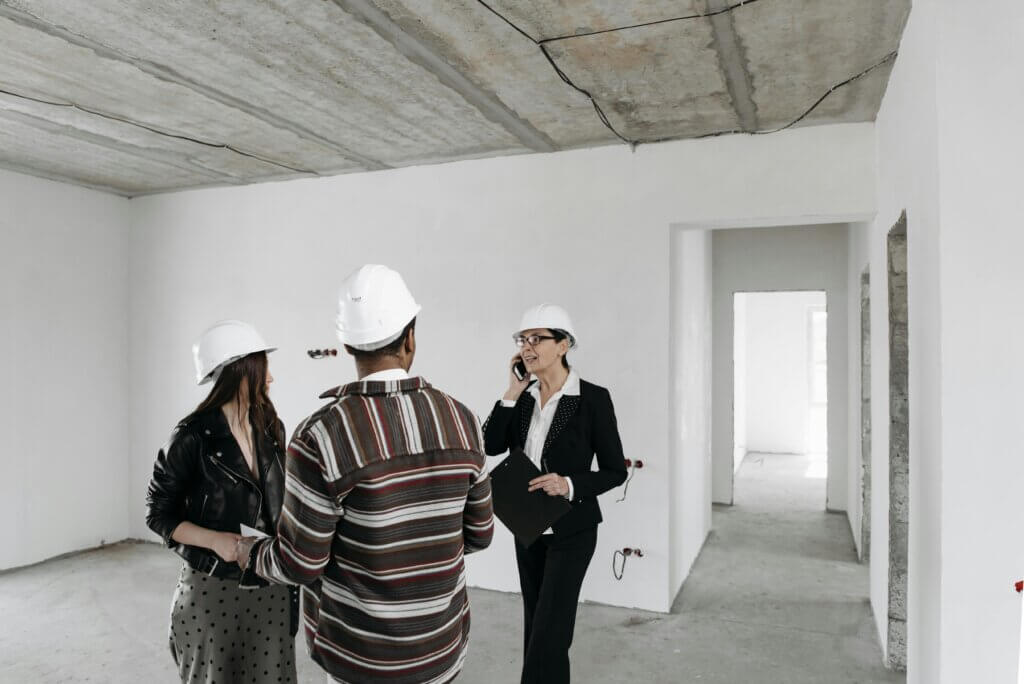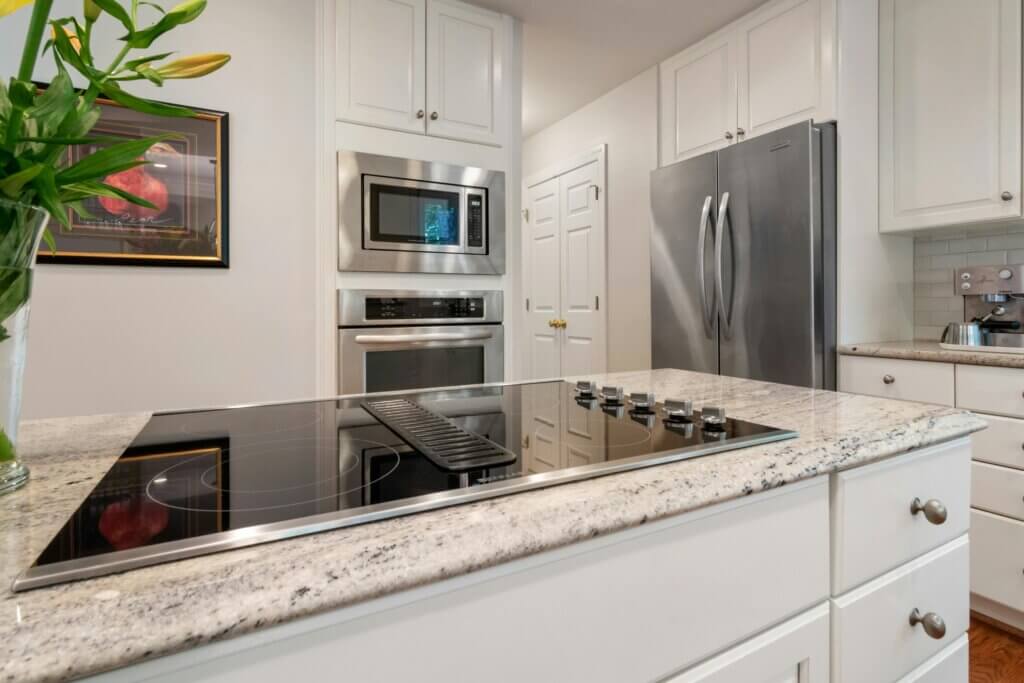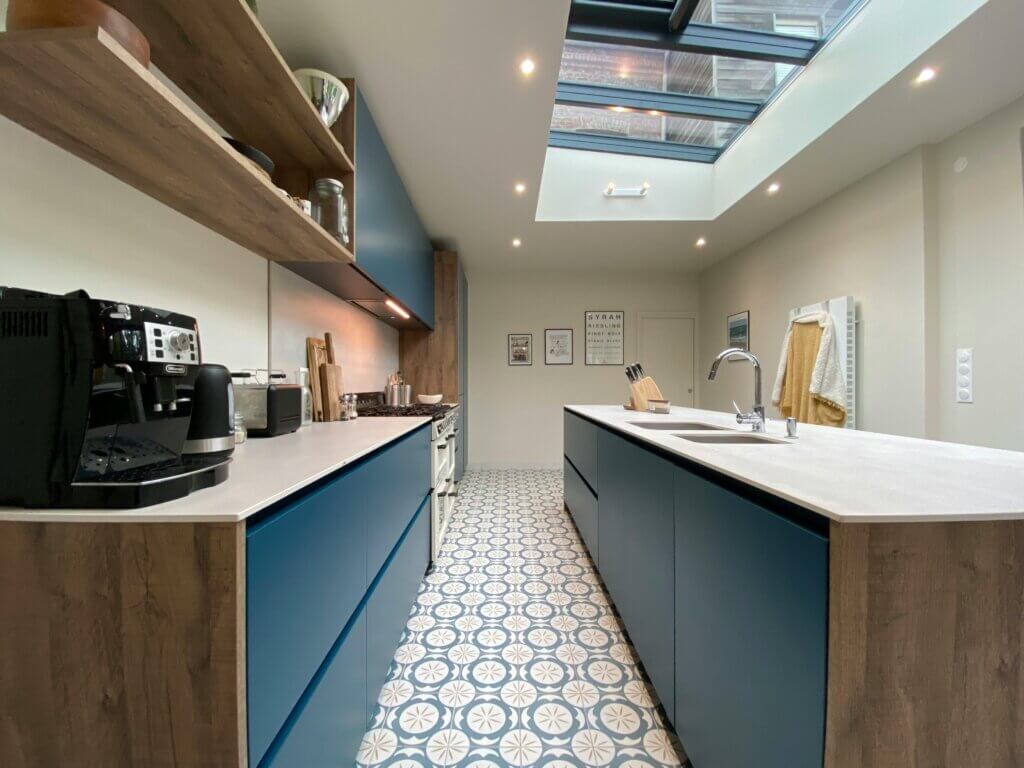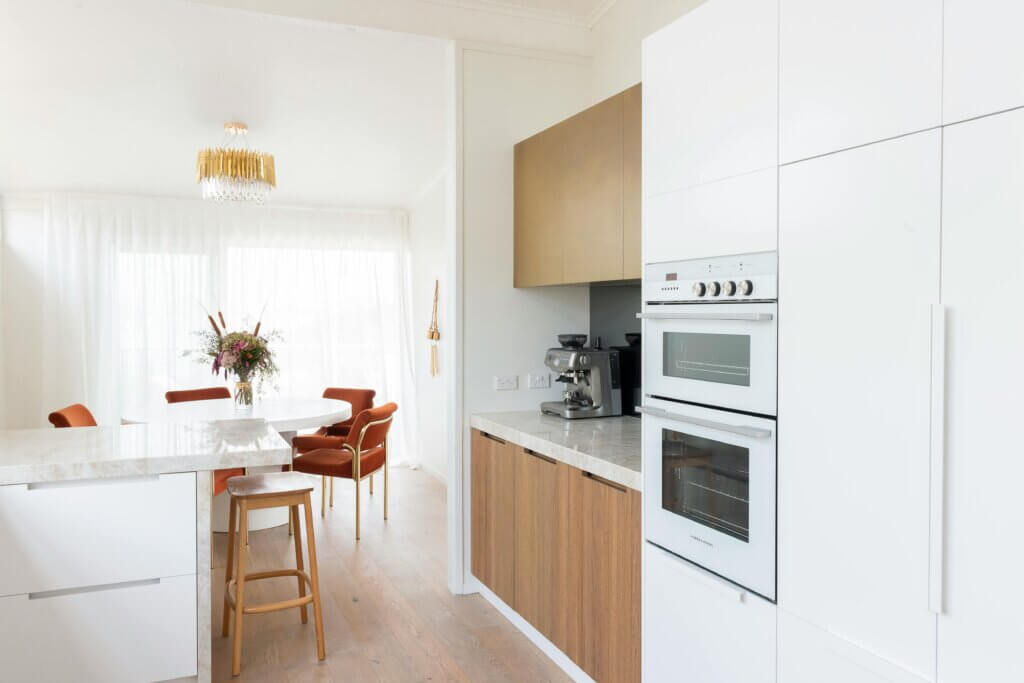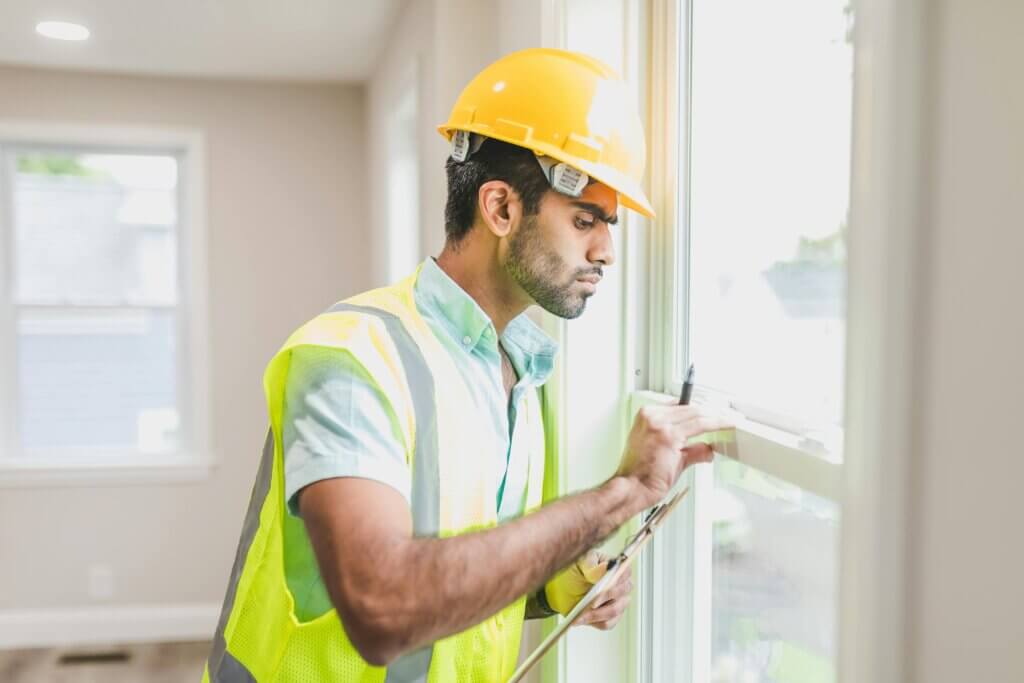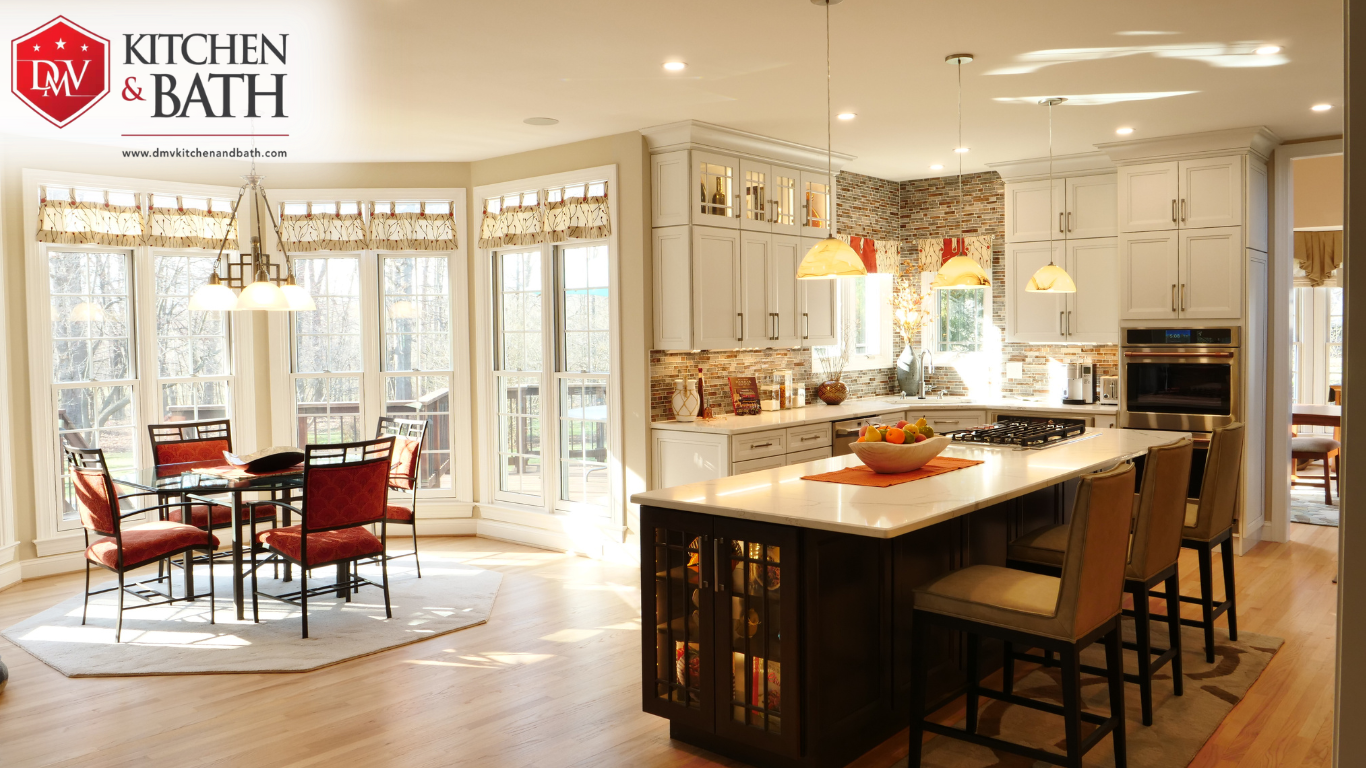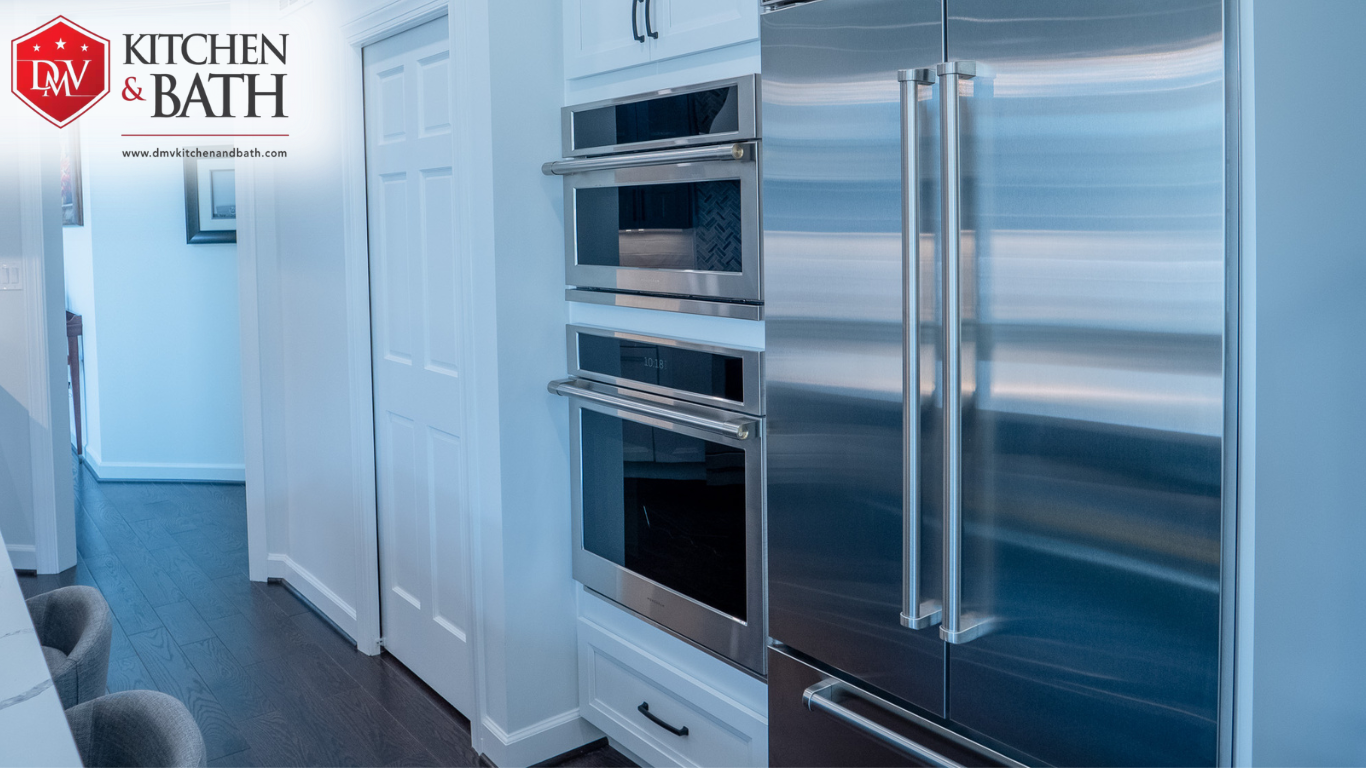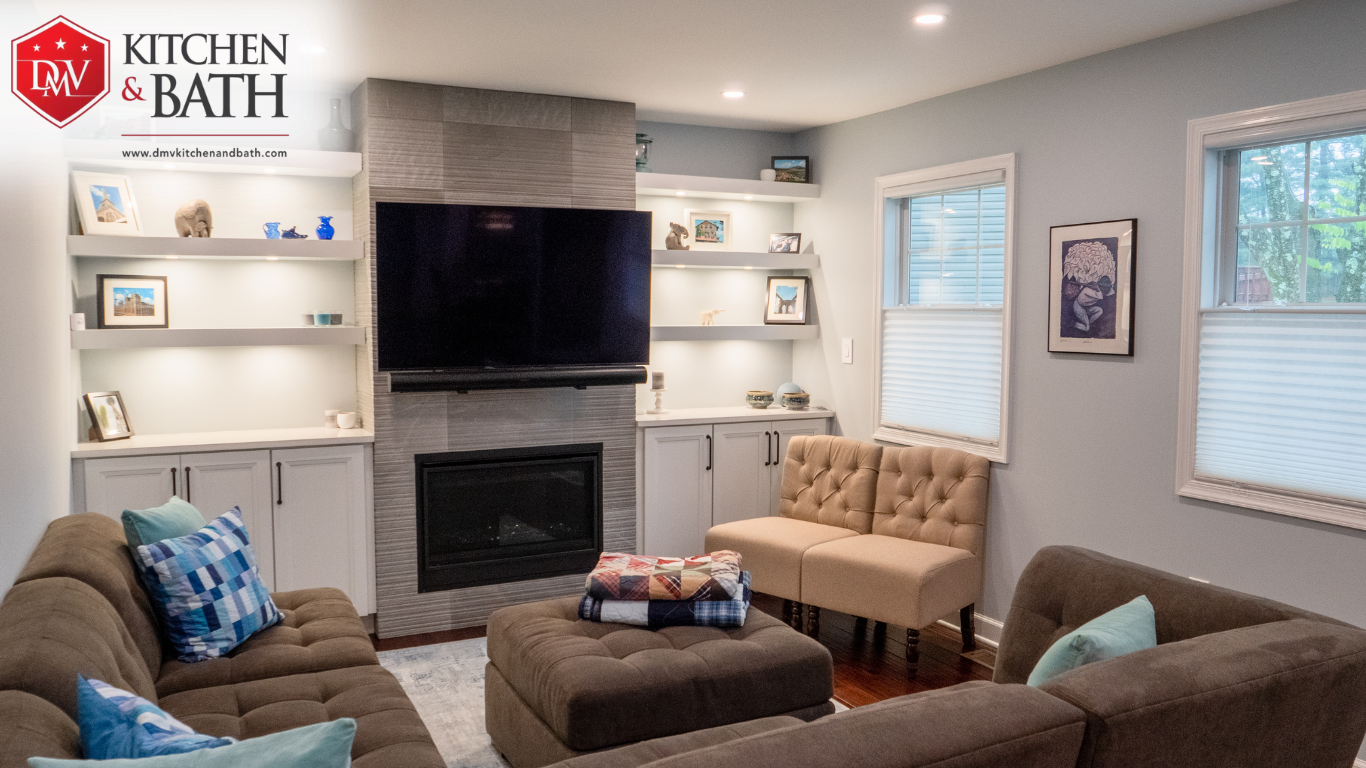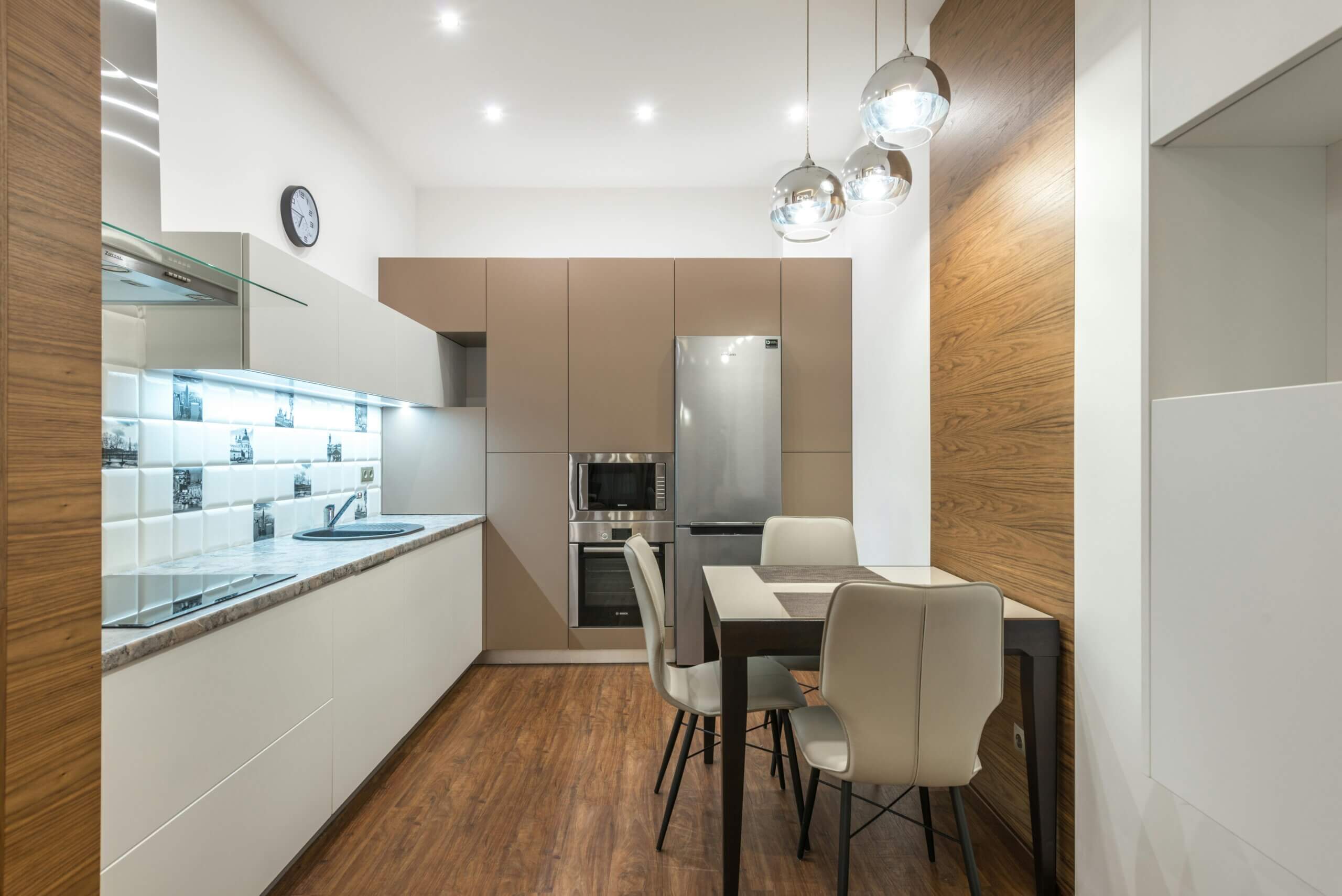
A Guide to Planning and Designing Your SKA-Certified Dream Kitchen13 min read
Imagine walking into a kitchen that’s stunning and functional and a shining example of sustainability. The countertops gleam with eco-friendly materials, the appliances hum with energy efficiency, and every element reflects a commitment to quality and environmental responsibility. This isn’t just any kitchen—it’s an SKA-certified kitchen.
Achieving Substantive Kitchen Accreditation (SKA) means you’ve met high sustainability, functionality, and design standards. However, when you aim for SKA certification, you’re taking your project to the next level—ensuring that every detail, from the materials you choose to the appliances you install, aligns with principles of eco-friendliness, functionality, and high quality.
But where do you start? The journey to creating an SKA-certified dream kitchen can seem overwhelming at first. With so many decisions to make and factors to consider, it’s easy to feel a bit lost. Don’t worry—this guide is here to help.
Contents
- What is SKA Certified Kitchen Accreditation?
- Key Aspects of the SKA Environmental Assessment Method
- How To Plan and Design Your SKA-Certified Dream Kitchen
- Initial Planning and Research
- Setting a Budget
- Hiring SKA-Certified Professionals
- Designing the Kitchen Layout
- Selecting Materials and Small Appliances
- Incorporating Eco-Friendly Features
- Finalizing the Design
- Construction and Installation
- Certification and Final Inspection
- Enjoying Your SKA-Certified Kitchen
What is SKA Certified Kitchen Accreditation?
Before we dive into the details, let’s talk about what SKA really means. Substantive Kitchen Accreditation is a certification that highlights kitchens designed and built to rigorous standards of sustainability and efficiency. SKA rating is an environmental assessment method developed for commercial office fit-outs by the Royal Institute of Chartered Surveyors (RICS).
It’s not just about looking good—it’s about making smart choices that benefit both the homeowner and the planet. From the materials you choose to the appliances you install, every decision plays a part in meeting these high standards.
Key Aspects of the SKA Environmental Assessment Method
Sustainability
SKA emphasizes the use of sustainable materials, such as recycled or renewable resources, low-VOC (volatile organic compound) paints and finishes, and eco-friendly cabinetry and countertops. This reduces the environmental impact of the kitchen and promotes the use of resources that are less harmful to the planet. SKA uses an environmental assessment method to measure sustainability across various factors such as energy and water use, CO2 emissions, materials, waste, and pollution.
Energy Efficiency
To earn SKA certification, kitchens must incorporate energy-efficient appliances and lighting. This includes choosing products with the Energy Star label, which indicates that they meet or exceed energy efficiency guidelines set by the Environmental Protection Agency (EPA). Efficient use of energy not only reduces the kitchen’s carbon footprint but also lowers utility bills.
Health and Safety
SKA-certified kitchens are designed with health and safety in mind. This includes ensuring good indoor air quality by using low-emission materials, providing proper ventilation, and implementing ergonomic designs that reduce strain and improve the ease of use.
Functionality
A key component of SKA is the emphasis on functional design. A well-designed kitchen layout not only enhances workflow but also provides a versatile space to entertain guests and share meals. This means creating a kitchen layout that enhances workflow, maximizes storage, and optimizes the use of space. The design of kitchen layouts should support the daily activities that take place in the kitchen, making it a practical and enjoyable space to work in.
Aesthetic Appeal
While functionality and sustainability are critical, the SKA assessment also considers the aesthetic quality of the kitchen. The design should be visually pleasing and harmonize with the rest of the home. Achieving a balance between beauty and practicality is essential for SKA certification. Magazines like House Beautiful offer great inspiration for creating a visually pleasing kitchen that harmonizes with the rest of the home.
SKA Silver Rating Certification Process
To achieve SKA certification, the kitchen design and construction must meet specific criteria and undergo a thorough inspection. This process involves working with SKA-certified professionals who understand the standards and can guide the project team to ensure compliance. The final inspection verifies that all elements of the kitchen adhere to the accreditation requirements. SKA certification levels include Bronze, Silver, and Gold ratings, with the Gold rating representing the highest level of sustainability performance.
How To Plan and Design Your SKA-Certified Dream Kitchen
The design phase is an exciting part of remodeling where clients get to see their remodeling dream come to life through floor plans and 3D renderings. Whether you’re a seasoned home renovator or tackling a kitchen remodel for your house for the first time, you’ll find the information you need to plan and design a space that not only looks fantastic but also performs exceptionally well and stands the test of time.
Initial Planning and Research
So, how do you begin? Start with a bit of dreaming and a lot of planning. Creating a detailed floor plan helps in visualizing the project layout and planning the home remodeling project effectively. Think about what you want from your new kitchen. Take time to gather inspiration and ideas.
Look into various other kitchen ideas, styles, color schemes, and innovative design solutions that align with SKA standards. Visit showrooms, browse design magazines, and explore online platforms like Pinterest and Houzz. Make a list of must-have features and elements you want in your dream kitchen.
This thorough preparation not only helps avoid common pitfalls but also empowers you to make decisions that align with both your aesthetic preferences and environmental goals, ultimately leading to a kitchen that is a true embodiment of excellence and responsibility. A well-planned kitchen not only enhances usability but also facilitates sustainable practices by minimizing resource consumption and waste generation.
Setting a Budget
Setting a budget for your kitchen remodel is not just about assigning a dollar amount; it’s about laying a solid financial foundation for your project. The first step is to research and gather estimates for all aspects of the remodel. This includes the cost of materials such as eco-friendly countertops, sustainable cabinetry, and low-VOC paints, as well as the expenses associated with energy-efficient appliances and fixtures. Careful material selection is crucial to ensure superior craftsmanship and quality while staying within the budget.
Factor in the cost of labor, which can vary based on the complexity of the project and the expertise of the professionals you hire. Don’t overlook additional expenses like permits, inspections, and any unforeseen contingencies that may arise during construction. Once you have a comprehensive list of costs, prioritize your spending based on what matters most to you—whether it’s investing in durable materials, advanced technology, or stylish design elements.
Setting a realistic budget ensures that you can make informed decisions throughout the remodeling process, maintain financial stability, and ultimately create a kitchen that not only enhances your home but also aligns with your values of sustainability and efficiency.
Hiring SKA-Certified Professionals
Hiring SKA-certified professionals for your kitchen remodel is a strategic decision that ensures your project meets the rigorous standards of Substantive Kitchen Accreditation. These professionals have undergone specialized training and certification, demonstrating their expertise in sustainable design, energy efficiency, and high-quality craftsmanship.
When selecting SKA-certified designers, architects, and contractors, look for their track record in implementing eco-friendly practices and their ability to integrate SKA principles into your project seamlessly. Collaborating with SKA-certified professionals not only enhances the sustainability and efficiency of your kitchen but also assures that your remodel will be executed to the highest industry standards.
Their knowledge and experience will guide you through every step of the process, from initial planning to final inspection, ensuring your SKA-certified kitchen is both a functional masterpiece and a testament to environmental responsibility.
Designing the Kitchen Layout
Designing the layout of your kitchen is a pivotal stage in creating a space that is both functional and aesthetically pleasing. Start by considering the kitchen work triangle—the efficient relationship between the sink, stove, and refrigerator—to optimize workflow. Incorporate ample counter space for food preparation and consider adding an island or a peninsula for additional workspace and seating if space permits.
Incorporating elements like a farmhouse sink can add both functionality and aesthetic appeal to the kitchen layout. Ensure that the layout promotes ease of movement and accessibility, especially if you have specific ergonomic needs or want to accommodate multiple cooks in the kitchen.
Balance practicality with style by integrating storage solutions like cabinets and drawers that maximize space utilization while maintaining a cohesive design theme. Ultimately, designing the layout of your kitchen involves thoughtful planning to create a space that enhances daily living while reflecting your taste and lifestyle.
Selecting Materials and Small Appliances
Selecting materials and appliances for your kitchen remodel is a crucial step in achieving a sustainable, efficient, and visually appealing space. Start by prioritizing eco-friendly materials that align with Substantive Kitchen Accreditation (SKA) standards, such as recycled or renewable options for countertops, flooring, and cabinetry.
Additionally, consider the importance of storage solutions like cabinets and drawers to accommodate cookware, bakeware, and small appliances. Look for materials that are durable, low in volatile organic compounds (VOCs), and sourced responsibly. When choosing appliances, opt for Energy Star-rated models that are proven to reduce energy consumption and lower utility costs over time.
Consider advanced features like smart technology that enhances energy efficiency and convenience in your kitchen. By selecting materials and appliances that prioritize sustainability and efficiency, you not only create a healthier environment for your home but also contribute positively to the planet.
Incorporating Eco-Friendly Features
Incorporating eco-friendly features into your kitchen remodel is not only beneficial for the environment but also enhances the functionality and sustainability of your home. Start by focusing on energy efficiency—install LED lighting to reduce electricity consumption, and choose Energy Star-certified appliances that conserve water and electricity.
Utilizing natural light to enhance workspace ergonomics, indoor air quality, and overall sustainability performance can significantly improve your kitchen’s eco-friendliness. Opt for sustainable materials like bamboo or reclaimed wood for flooring and cabinetry, and consider low-VOC paints and finishes to improve indoor air quality. Integrate water-saving fixtures such as aerators and low-flow faucets to minimize water waste.
Additionally, think about incorporating recycling and composting stations to reduce household waste. By prioritizing eco-friendly features in your front room and kitchen design, you create a space that is not only beautiful and efficient but also contributes to a healthier planet for future generations.
Finalizing the Design
Finalizing the design of your kitchen marks the culmination of careful planning and thoughtful decision-making, ensuring that every detail contributes to a space that is both functional and visually appealing. Begin by reviewing your initial plans and incorporating any adjustments based on feasibility and budget considerations.
Confirm that the layout optimizes workflow and enhances accessibility, taking into account the placement of key elements like appliances, storage solutions, and work surfaces. Choose materials and finishes that not only align with your aesthetic preferences but also meet sustainability criteria, such as eco-friendly and durable options that contribute to Substantive Kitchen Accreditation (SKA) standards.
Pay attention to lighting design, ensuring adequate illumination for different tasks while integrating energy-efficient fixtures. Collaborate closely with your designer and SKA-certified professionals to ensure all design elements align with accreditation requirements and that the final design reflects your vision for a functional, sustainable, and stylish kitchen space.
Construction and Installation
The construction and installation phase of your kitchen remodel is where your vision begins to take shape, transforming plans into reality. This critical stage involves coordinating with skilled contractors and tradespeople to ensure that all aspects of your design are executed with precision and care.
Begin by preparing the space for construction, which may involve demolition, structural adjustments, and ensuring compliance with building codes and SKA standards. As construction progresses, monitor the installation of eco-friendly materials, energy-efficient appliances, and sustainable fixtures to ensure they meet your specifications and contribute to a green, efficient kitchen environment.
Regular communication with your SKA-certified professionals and contractors is key to addressing any challenges promptly and maintaining the project timeline. Lastly, conduct thorough inspections at key milestones to verify quality and compliance with SKA requirements, ensuring that your newly renovated kitchen not only meets your expectations but also achieves the highest standards of sustainability and functionality.
Certification and Final Inspection
Certification and final inspection are the pivotal steps that validate your efforts in achieving Substantive Kitchen Accreditation (SKA), ensuring your kitchen remodel meets stringent sustainability and efficiency standards. At this stage, SKA-certified professionals conduct a thorough assessment to verify that all aspects of your kitchen—from materials and appliances to design and construction—adhere to SKA criteria.
The SKA silver rating demonstrates major progress in sustainability initiatives through the fit-out process and is considered the baseline target for green-conscious companies. This process includes reviewing documentation, conducting on-site inspections, and ensuring compliance with local building codes and environmental regulations.
Once approved, you receive SKA certification, affirming that your kitchen not only meets high-performance standards but also contributes positively to environmental conservation and promotes healthy living spaces. This certification not only enhances the value and appeal of your home but also reflects your commitment to responsible living and sustainable design practices.
Enjoying Your SKA-Certified Kitchen
With the certification in hand, your dream kitchen is ready for use. Enjoy the benefits of a beautifully designed, functional, and eco-friendly space. Not only will you experience the immediate advantages of energy efficiency and improved indoor air quality, but you’ll also contribute to a sustainable future.
Planning and designing your SKA-certified dream kitchen is a rewarding journey that begins with thoughtful preparation and informed decision-making. By understanding the principles of SKA, setting a realistic budget, and working with certified professionals, you and your family can create a kitchen that excels in sustainability, efficiency, and aesthetic appeal.
Ready to transform your kitchen into a sustainable, efficient, and stunning space? Start planning your SKA-certified dream kitchen today!
Don’t wait—take the first step towards a kitchen that reflects your commitment to quality and the environment. Contact us today for a kitchen and bathroom remodeling estimate. Begin your journey now and create a kitchen that you’ll love for years to come!







